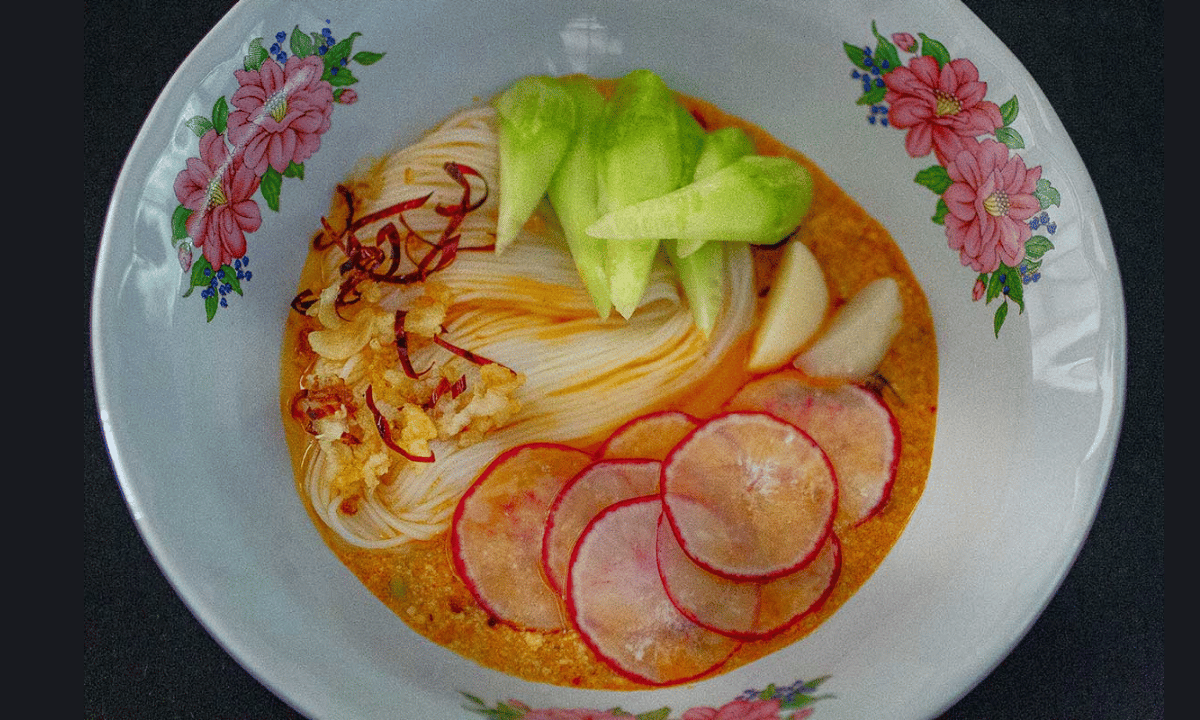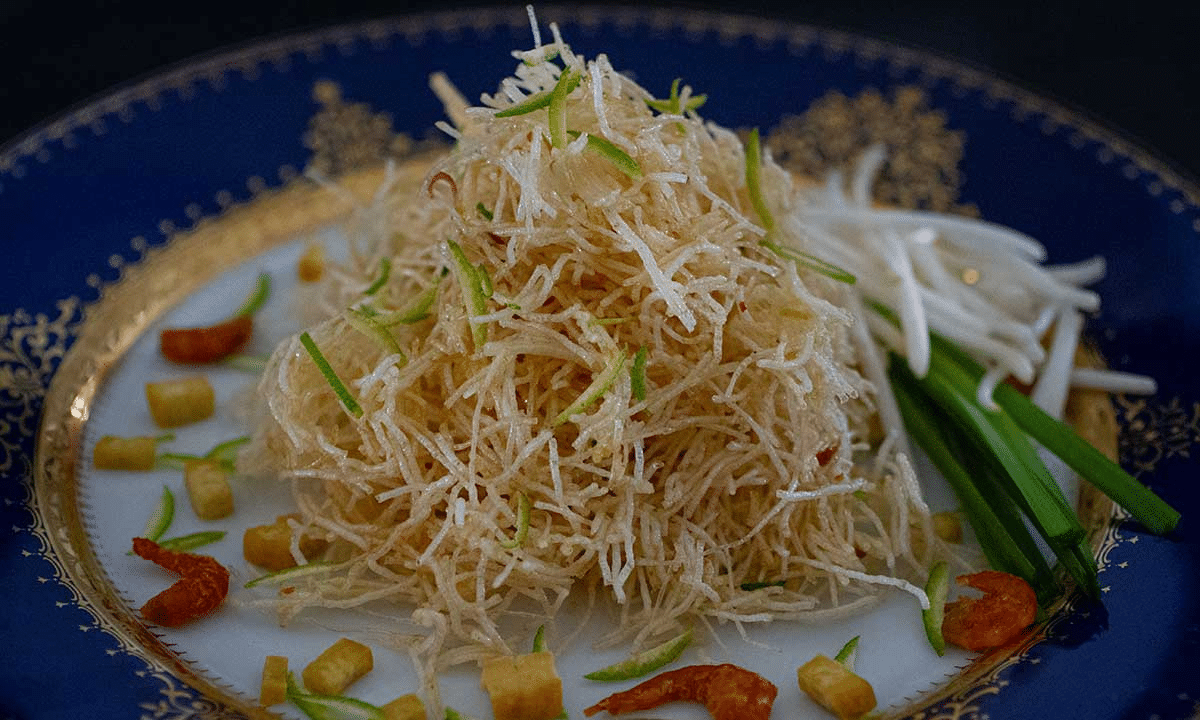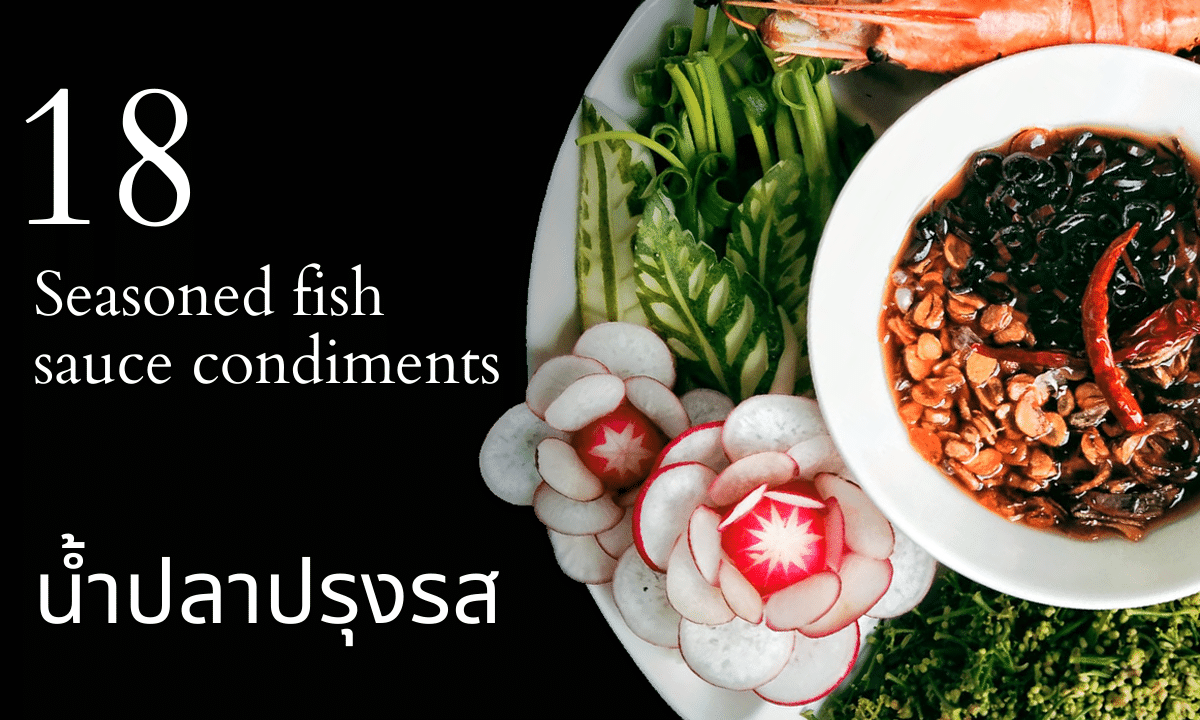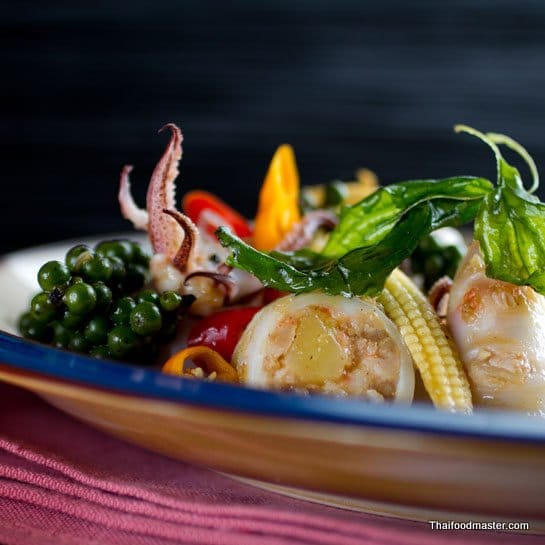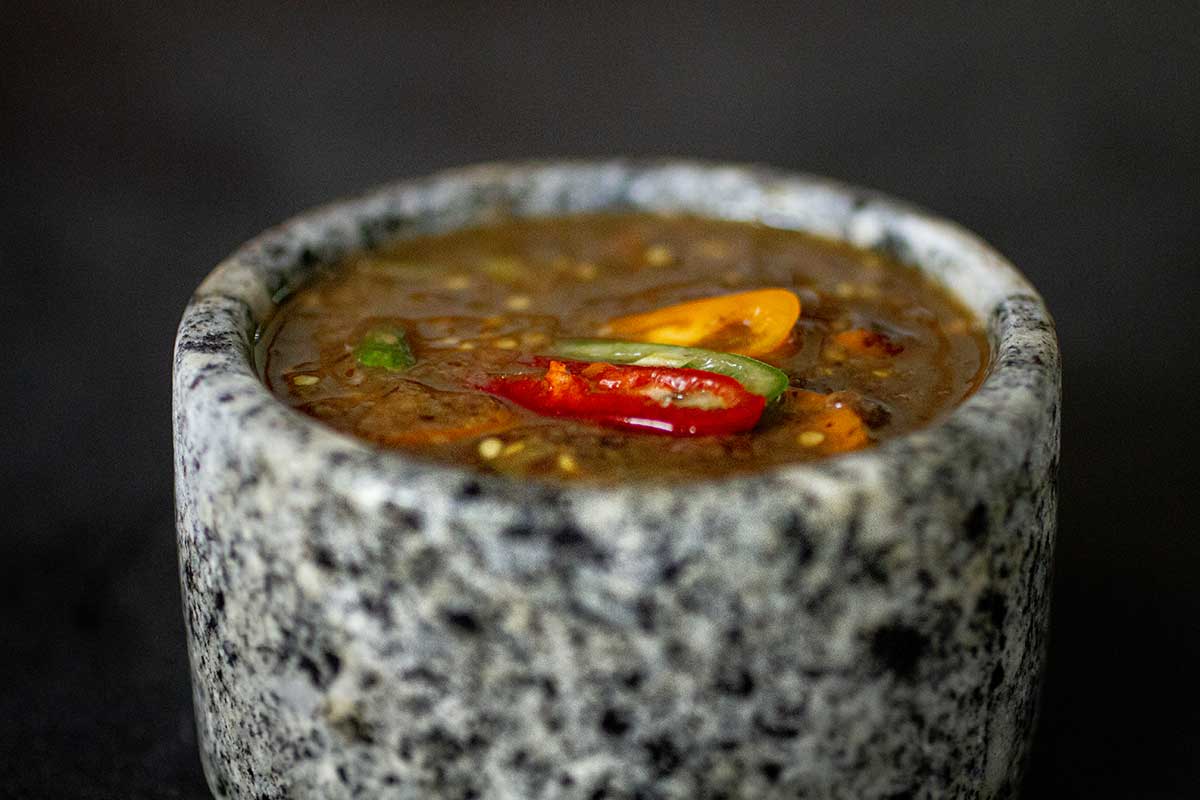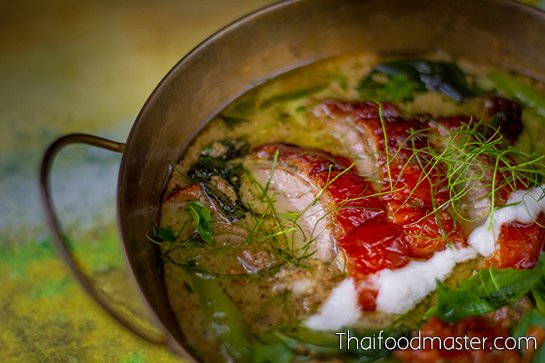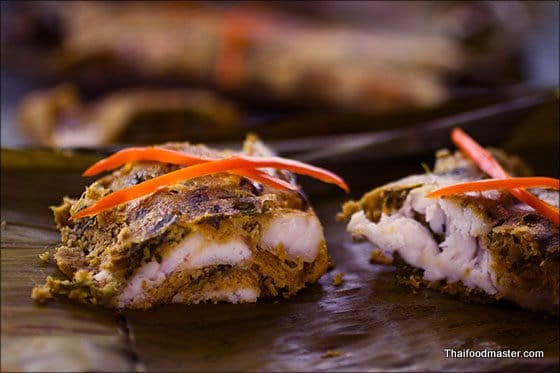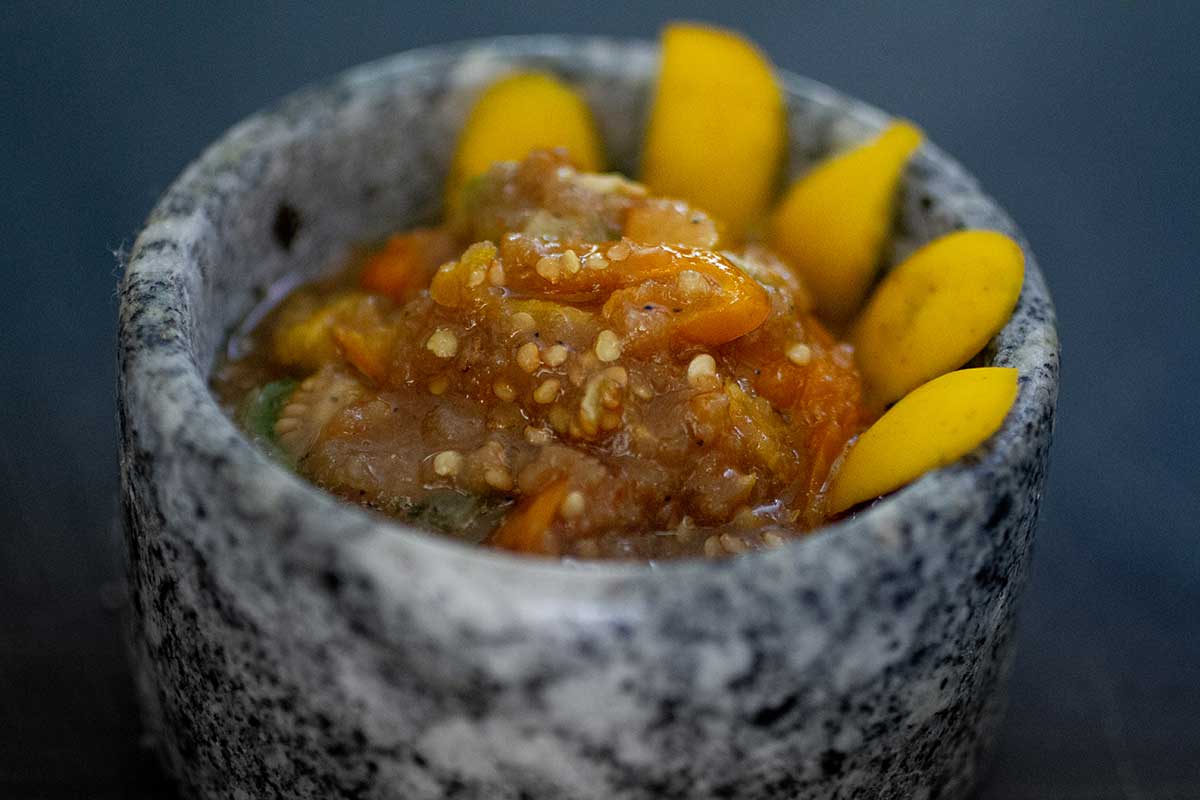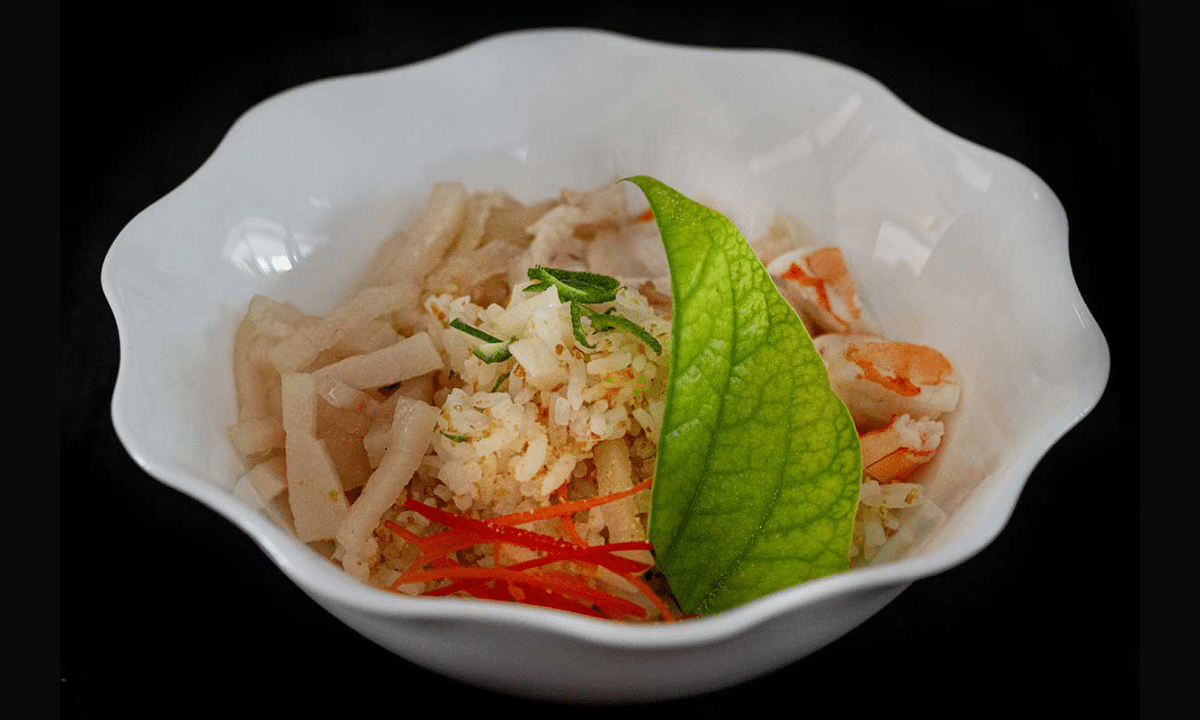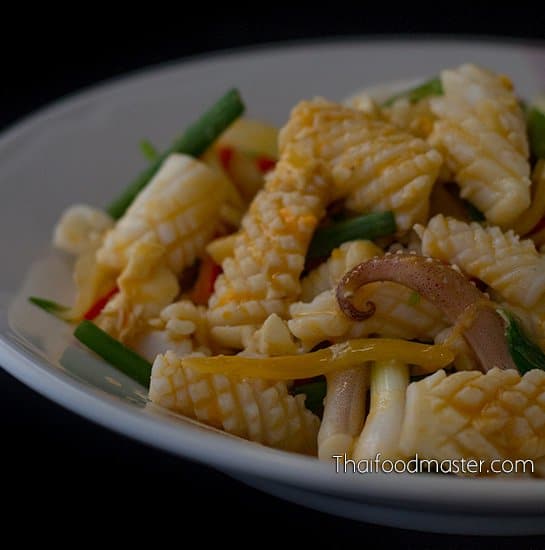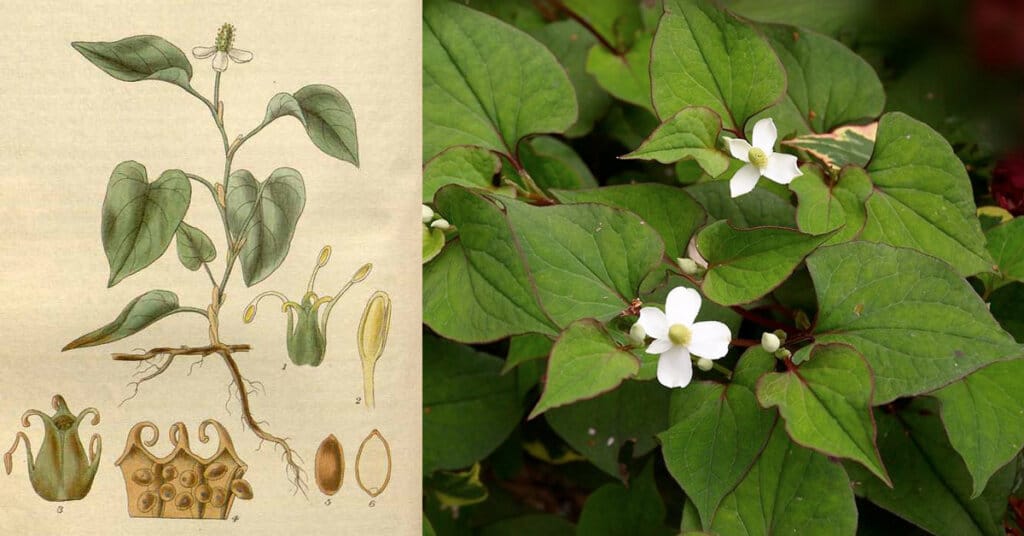
Other names:
ผักคาวตอง (phak khaao dtaawng), คาวทอง (khaao thaawng), ผักก้านตอง (phak gaan dtaawng), ผักคาวปลา (phak khaao bplaa), ผักเข้าตอง (phak khao dtaawng), ผักคาวตอง (phak khaao dtaawng), พลูคาว (phluu khaao).
Houttuynia cordata, also known as fish mint, fish leaf, rainbow plant, chameleon plant, heart leaf, fish wort, or Chinese lizard tail, is one of two species in the genus Houttuynia (the other being H. emeiensis). It is a flowering plant native to Southeast Asia. It grows in moist, shady locations. It was named after Martinus Houttuyn. [1]Wikipedia
Houttuynia cordata is a herbaceous perennial plant that can grow to 0.6–1 m (2 ft 0 in–3 ft 3 in), spreading up to 1 m (3 ft 3 in). The proximal part of the stem is trailing and produces adventitious roots, while the distal part of the stem grows vertically. The leaves are alternate, broadly heart-shaped, 4–9 cm (1+1⁄2–3+1⁄2 in) long and 3–8 cm (1–3 in) broad. Its flowers are greenish-yellow and borne on a terminal spike 2–3 cm (3⁄4–1+1⁄4 in) long with four to six large white basal bracts. It normally blooms in the summer. [2]Wikipedia
It is considered an invasive plant because of its ability to regrow rhizomes from any segment of its foliage. [3]Wikipedia
Culinary use
Served fresh alongside laap dishes.
In northeastern India, it is commonly used in salads, salsas, or cooked with other vegetables, and as a garnish over side dishes. The tender roots can also be ground into chutneys along with dry meat or fish, chilies, and tamarind. It is taken raw as salad and cooked along with fish as fish curry. In Japan and Korea, its dried leaves may be used as an herbal tea, which is believed to have healing properties. It is called ドクダミ茶 (“dokudami”) in Japan. [4]Wikipedia
In Vietnamese cuisine, it is called giấp cá, and it is used with grilled meat and noodle salad dishes. Fish mint may be used as a garnish with several Vietnamese dishes, such as gỏi cuốn stir-fried beef with fish mint salad, and bánh xèo. [5]Wikipedia
Zhé’ěrgēn (Chinese: 折耳根, “broken ear-root”) is the edible rhizome of Houttuynia cordata (yuxingcao, 鱼腥草 “fish-smelling leaf”) with a fresh, spicy, peppery flavour that is used in southwestern Chinese cuisine, i.e. that of Guizhou, Sichuan, Yunnan and western Guangxi. Typically the leaves are eaten in Sichuan and the root in Guizhou. Zhé’ěrgēn fried with cured la rou (a dried meat resembling ‘Chinese bacon’) is one of the staple dishes of Guizhou. [6]Wikipedia
Traditional medicine
Houttuynia cordata was used in traditional Chinese medicine, including by Chinese scientists in an attempt to treat SARS and various other disorders, although there is no high-quality clinical research to confirm such uses are safe or effective, as of 2018. When administered via injection, H. cordata can cause severe allergic reactions. [7]Wikipedia
Aroma profile
Chemical compounds that contribute to the aroma of H. cordata include β-myrcene and 2-undecanone. [8]Wikipedia
The information on this website has been compiled from reliable sources, such as reference works on medicinal plants. It is not a substitute for medical advice or treatment and Thaifoodmaster does not purport to provide any medical advice.
References
